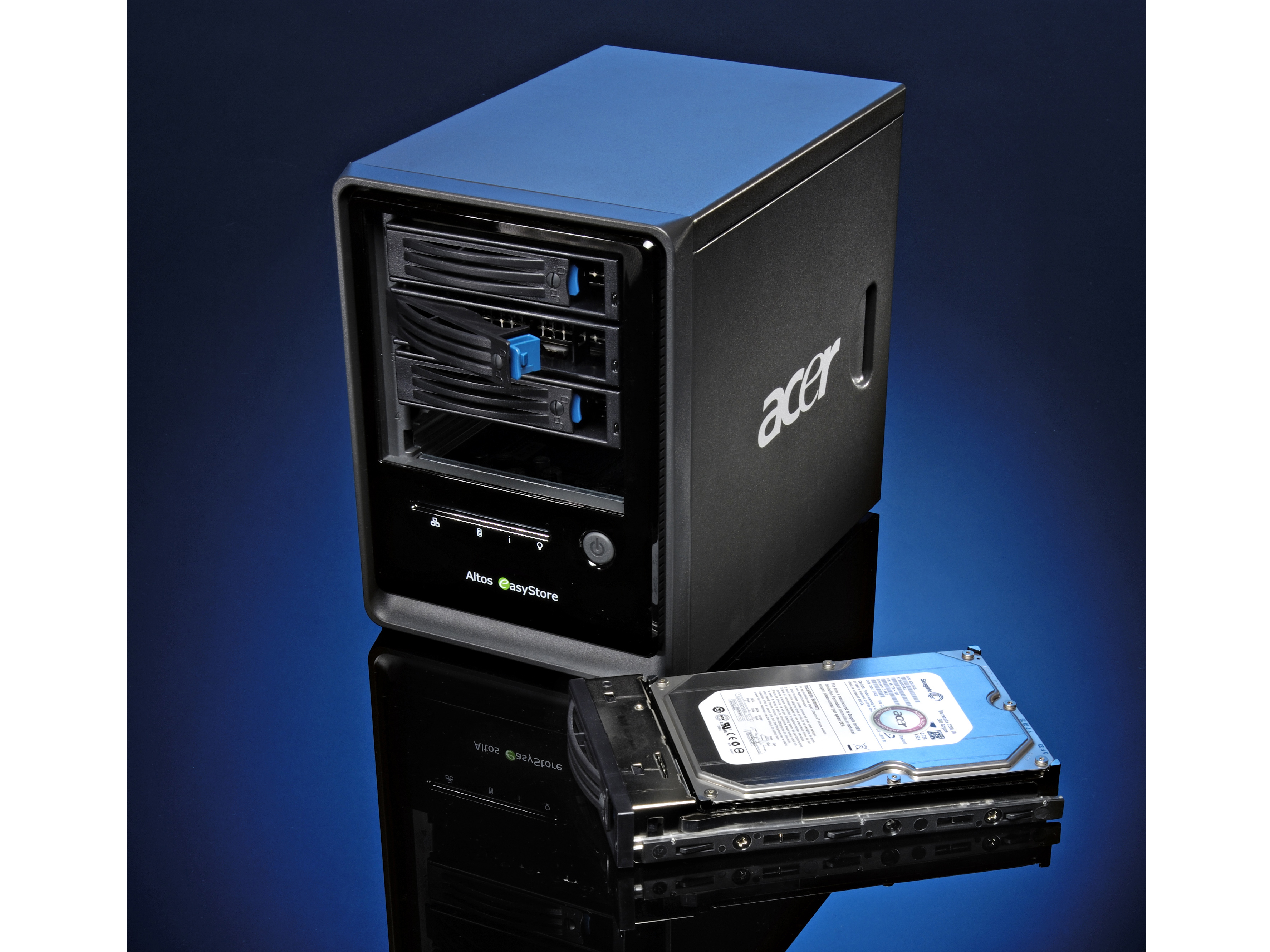TechRadar Verdict
Support for RAID 5 means that backup on 1.5TB of network-accessible storage is easy... after the Windows-only set-up
Pros
- +
RAID systems allow for easy backup
Well-designed configuration pages
Can hook into an Active Directory server
Cons
- -
Needs Windows for initialisation
Documentation is poor for beginners
£700 is a lot of cash
Why you can trust TechRadar
The price of hard disks has dropped, but if you're part of a workgroup, it doesn't matter that you can buy a 500GB, USB-connected disk for £80; it doesn't make for a convenient location to store the information generated by your team, and backup requires manual intervention.
Enter Acer's Altos easyStore, a RAID NAS. The fact that it's a NAS (Network-Attached Storage) device means that it connects to a router or switch directly, rather than to a specific Mac/PC. It's accessible by any computer on that network; you set up shared folders on the NAS, then create a list of users and groups and grant them certain access permissions.
The level of control is pretty coarse - read-only, read/write and no access - but usual for NAS devices. It can tie into an Active Directory server, so if you have batches of users and groups set up, you can integrate them directly into its access control list.
The unusual thing about the disk is that it's also a hardware RAID system. A Redundant Array of Independent Disks device uses two or more identical drives to change the way data is stored.
In our test unit, four 500GB drives were fitted. Among other choices, you can have the data mirrored in RAID 10, halving the storage to 1TB but duplicating it to the other two drives so you have a literal duplicate if drives fail.
You can have data striped between drives for higher performance or, the most useful option, managed using RAID 5. With this setting, space equivalent to one drive - leaving you 1.5TB for data storage - is used to help rebuild the RAID set if one drive fails.
You pop the duff drive out - yes, while the unit is still on and being used -and slot in a new one; the RAID set will automatically rebuild with all your data intact. The config pages alert you to drive and hotplug status.
Annoyingly, you need a Windows PC to perform the once-only initialisation; with that done, you configure the disk by punching its default static IP address into a browser. After this, PCs or Macs running Windows, OS X or Linux can access the shares.
There's no support for the Mac's native AFP protocol, so it's not working at peak efficiency, but transfer speeds are acceptable. There's client backup software bundled, but it's Windows-only.
Setting up is fine if you have knowledge of networks, NAS and RAID technologies, but there's no guidance in the manual for Macs - if you don't feel confident, try Western Digital's consumer-oriented My Book World Edition II.
Tech.co.uk was the former name of TechRadar.com. Its staff were at the forefront of the digital publishing revolution, and spearheaded the move to bring consumer technology journalism to its natural home – online. Many of the current TechRadar staff started life a Tech.co.uk staff writer, covering everything from the emerging smartphone market to the evolving market of personal computers. Think of it as the building blocks of the TechRadar you love today.

